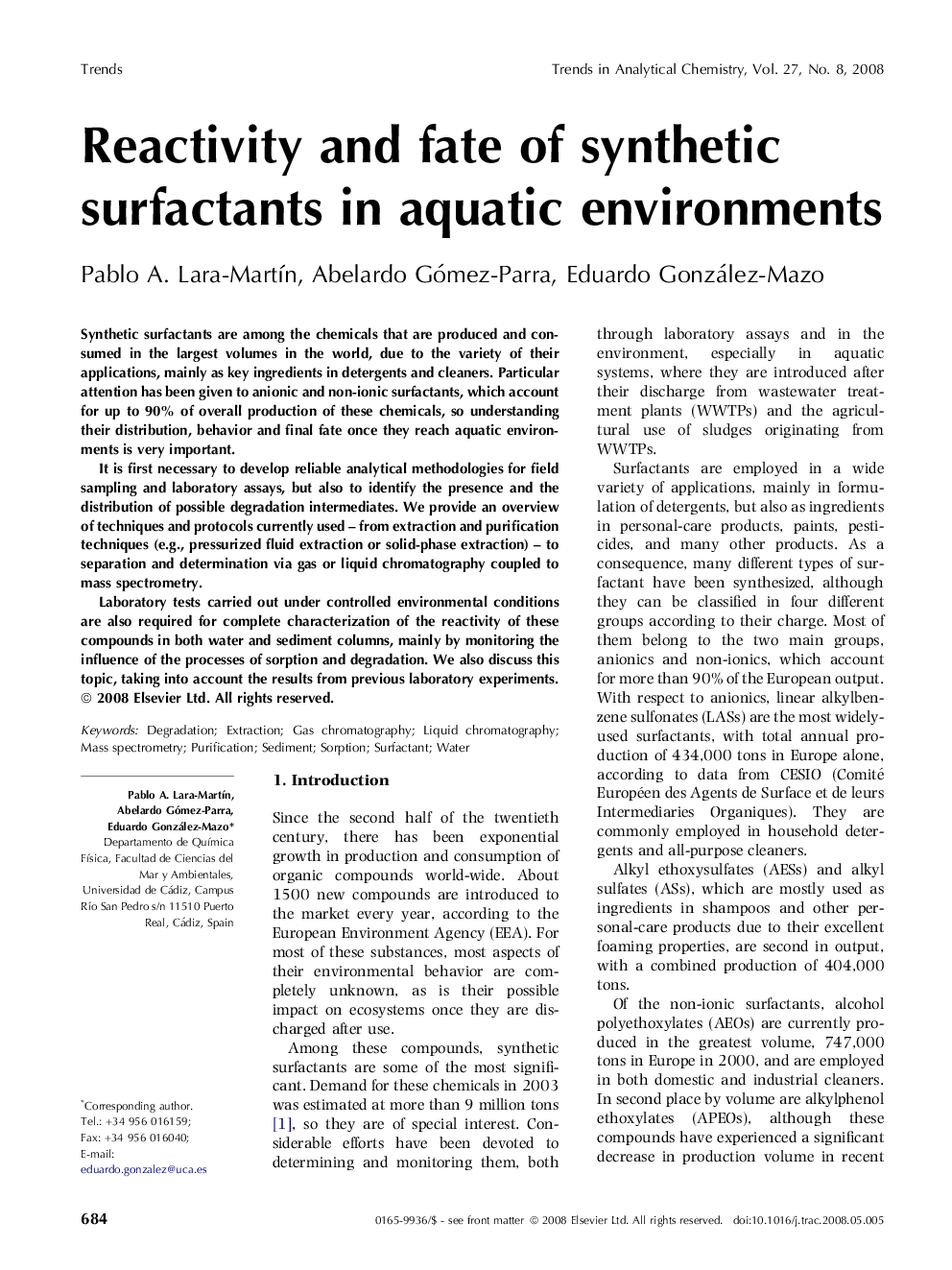| Article ID | Journal | Published Year | Pages | File Type |
|---|---|---|---|---|
| 1249406 | TrAC Trends in Analytical Chemistry | 2008 | 12 Pages |
Synthetic surfactants are among the chemicals that are produced and consumed in the largest volumes in the world, due to the variety of their applications, mainly as key ingredients in detergents and cleaners. Particular attention has been given to anionic and non-ionic surfactants, which account for up to 90% of overall production of these chemicals, so understanding their distribution, behavior and final fate once they reach aquatic environments is very important.It is first necessary to develop reliable analytical methodologies for field sampling and laboratory assays, but also to identify the presence and the distribution of possible degradation intermediates. We provide an overview of techniques and protocols currently used – from extraction and purification techniques (e.g., pressurized fluid extraction or solid-phase extraction) – to separation and determination via gas or liquid chromatography coupled to mass spectrometry.Laboratory tests carried out under controlled environmental conditions are also required for complete characterization of the reactivity of these compounds in both water and sediment columns, mainly by monitoring the influence of the processes of sorption and degradation. We also discuss this topic, taking into account the results from previous laboratory experiments.
